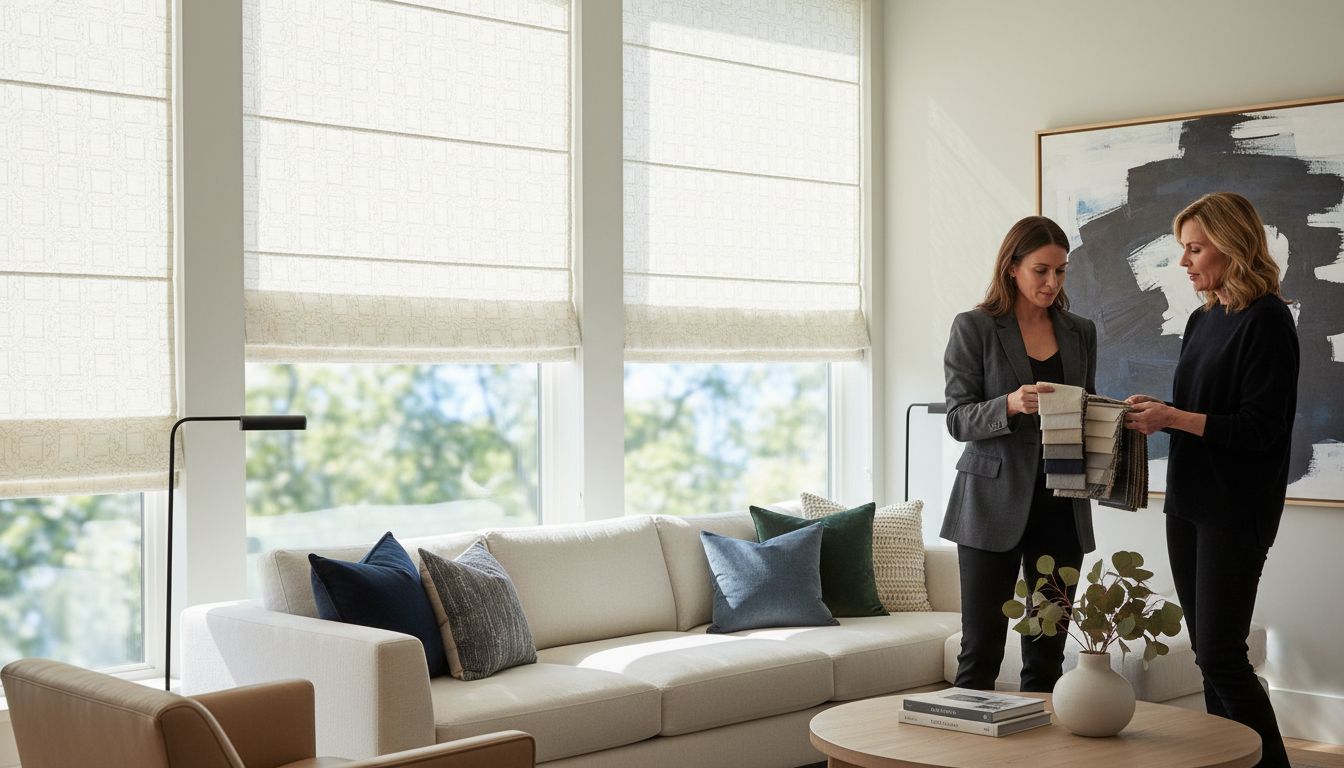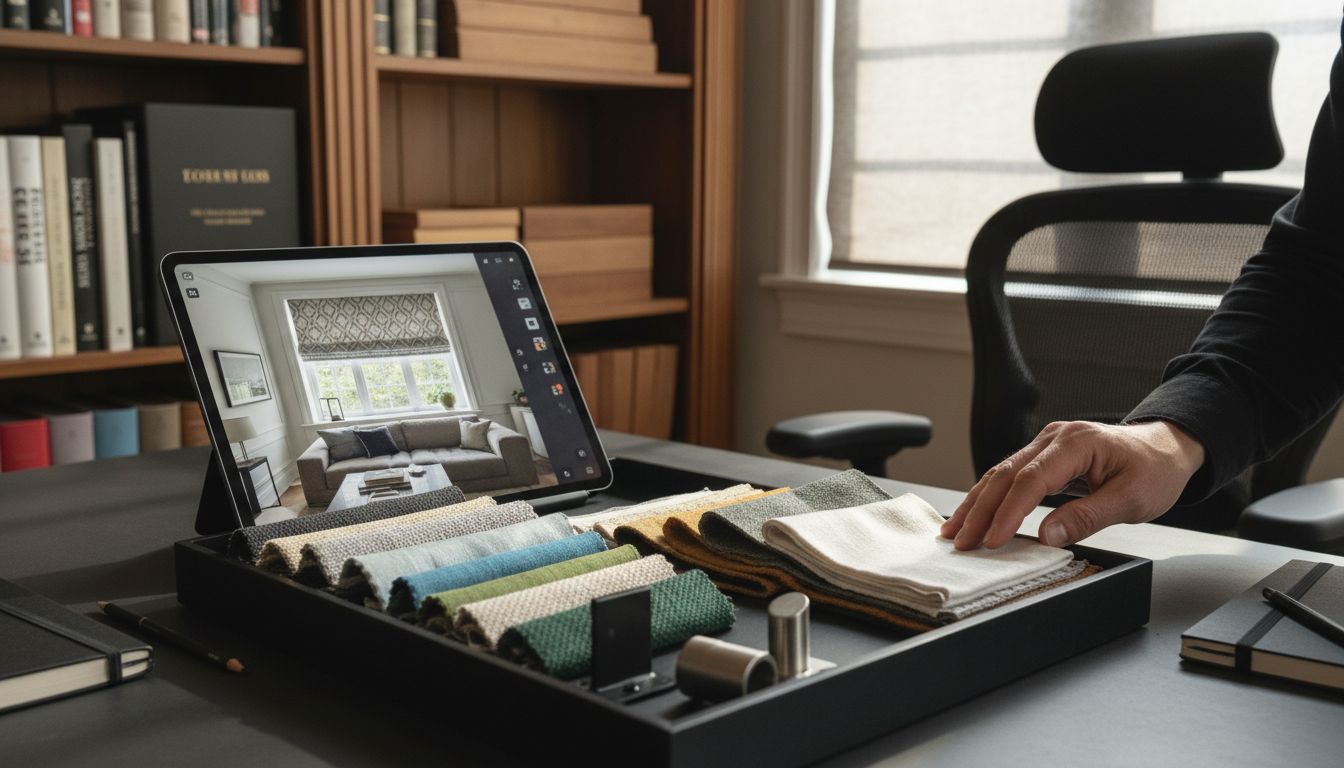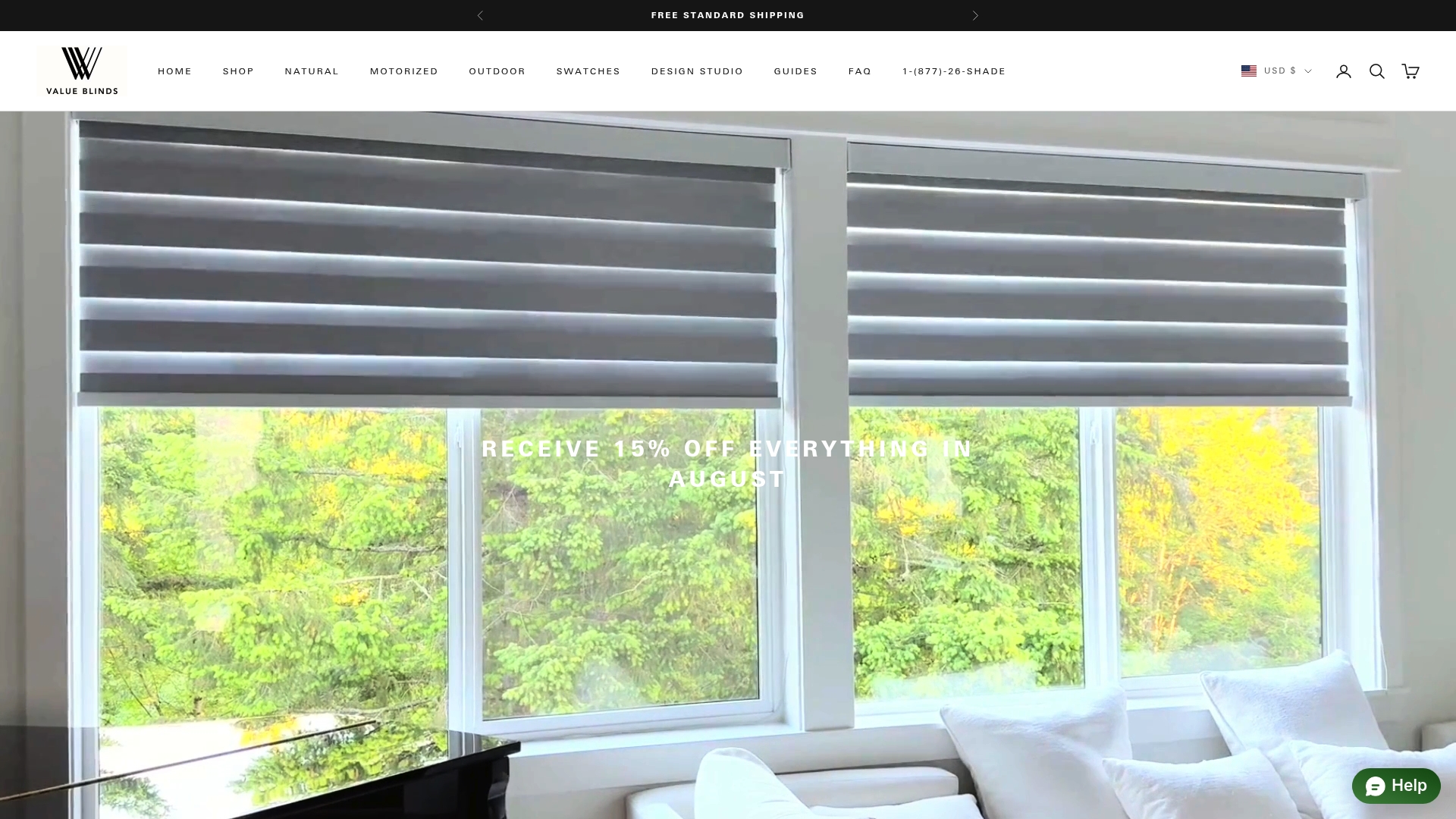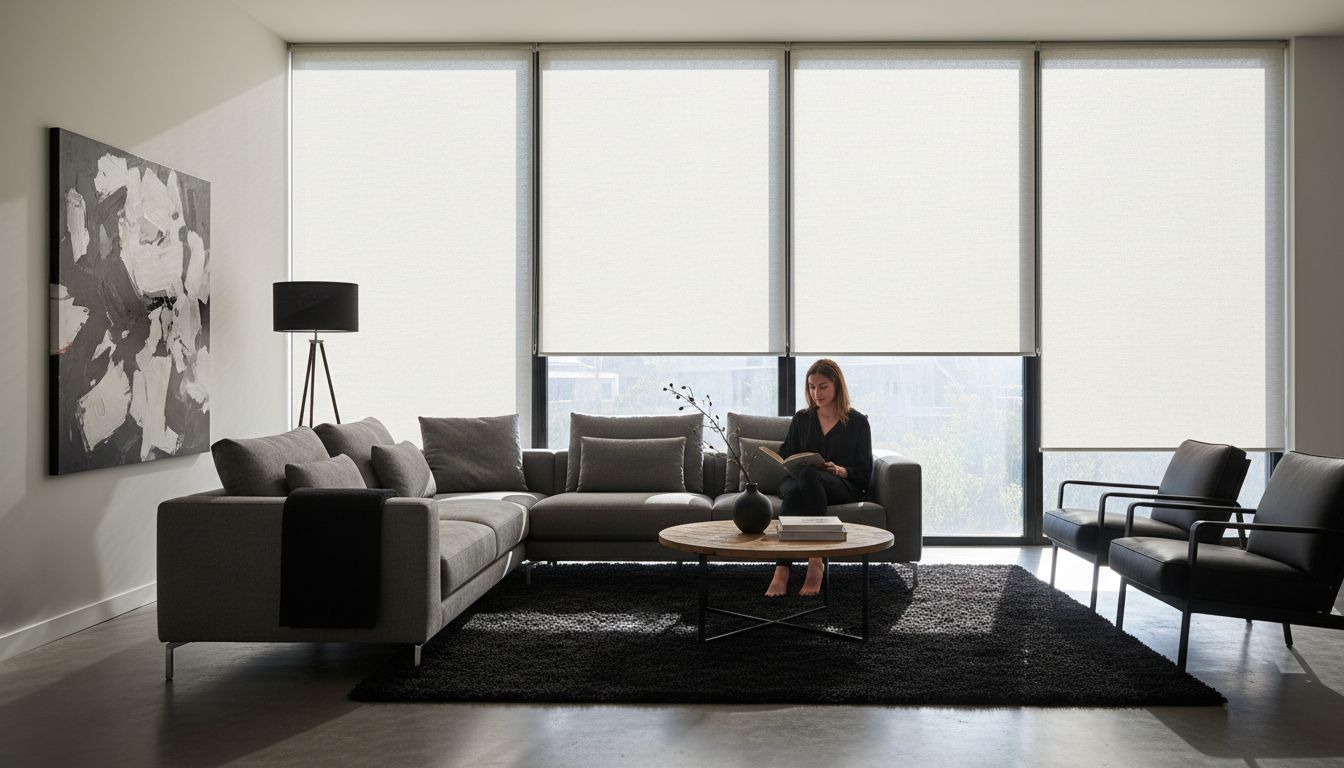Article: Complete Guide to Decorative Fabric Window Shades

Complete Guide to Decorative Fabric Window Shades
Nearly 80 percent of american homes incorporate some form of fabric window shade for both style and function. Choosing the right window coverings can transform a bland space into a warm, inviting environment while also managing light and privacy. This guide explains how fabric window shades deliver both beauty and practical benefits, helping you make thoughtful choices that suit your decor and daily living needs.
Table of Contents
- Defining Decorative Fabric Window Shades
- Types and Styles of Fabric Window Shades
- Key Features and Customization Options
- Installation Process and Maintenance Tips
- Comparing Shades With Other Window Treatments
- Costs, Longevity, and Common Mistakes
Key Takeaways
| Point | Details |
|---|---|
| Versatile Design Options | Decorative fabric window shades offer a wide range of styles, including Roman, roller, and cellular shades, allowing for extensive customization in interior decor. |
| Functionality and Aesthetics | These shades provide exceptional light control, thermal insulation, and noise reduction, combining functionality with elegant design. |
| Installation and Maintenance | Proper installation and regular maintenance are crucial for the longevity and aesthetic appeal of fabric window shades, requiring careful attention to detail. |
| Cost and Value Considerations | While costs vary, high-quality fabric shades can be a worthwhile investment, balancing initial price with long-term durability and functionality. |
Defining Decorative Fabric Window Shades
Decorative fabric window shades are versatile interior design elements that transform ordinary windows into stunning focal points while providing essential light control and privacy. Unlike traditional window coverings, these specialized treatments combine functional performance with aesthetic sophistication, utilizing carefully selected fabrics that enhance a room’s visual appeal.
Fabric window shades represent a nuanced approach to interior design, leveraging different textile properties to achieve specific outcomes. Holland Cloth exemplifies this principle, offering a plainwoven fabric renowned for its opacity and remarkable durability. These shades can range from completely light-blocking to softly translucent, depending on the selected material and weave.
The architectural potential of fabric window shades extends far beyond mere utility. Voile, a lightweight and sheer fabric, demonstrates how window treatments can create atmospheric transformations. Such materials allow gentle light filtration while maintaining privacy - a delicate balance that turns windows into dynamic design elements. These shades can dramatically alter a room’s mood, softening harsh sunlight or creating intimate, diffused lighting environments.
Key characteristics of decorative fabric window shades include:
- Customizable light transmission levels
- Diverse texture and color options
- Enhanced thermal insulation
- Noise reduction capabilities
- Flexible design integration with various interior styles
For those seeking comprehensive insights into fabric window treatments, our guide on types of window shades offers an extensive exploration of design possibilities and functional considerations.
Types and Styles of Fabric Window Shades
Fabric window shades offer an incredible range of design possibilities, transforming interior spaces through strategic textile selection and innovative styling techniques. Sewing.org highlights several distinctive styles that provide homeowners with unparalleled decorative flexibility, including Roman, roller, and balloon shade configurations.
Roman shades represent a classic approach to fabric window treatments, featuring soft fabric panels that fold elegantly when raised and create smooth, streamlined surfaces when lowered. These shades can be crafted from various materials - ranging from lightweight linens to heavyweight textured fabrics - allowing for remarkable design versatility. Roller shades, by contrast, offer a more minimalist aesthetic, utilizing single pieces of fabric that smoothly roll up and down with precise mechanical action.
One Room Challenge provides comprehensive insights into the nuanced world of window treatments, emphasizing how different fabric selections dramatically influence a room’s ambiance. Cellular shades, another popular style, feature honeycomb-like structured fabrics that provide exceptional thermal insulation while maintaining a sleek, contemporary appearance.
Key fabric window shade styles include:
- Roman Shades: Elegant, fold-based design
- Roller Shades: Streamlined, minimalist appearance
- Cellular Shades: Structured, energy-efficient option
- Balloon Shades: Dramatic, voluminous styling
- Pleated Shades: Crisp, structured look
For those interested in exploring cutting-edge window treatment trends, our comprehensive guide to fabric light filtering roller shades offers an in-depth exploration of contemporary design options and functional considerations.
Key Features and Customization Options
Fabric window shades represent a sophisticated intersection of functionality and personalized design, offering homeowners unprecedented control over their interior environments. Sewing.org emphasizes that these versatile window treatments provide multiple critical features including precise light control, superior thermal insulation, and remarkable aesthetic flexibility.
Customization options extend far beyond basic color selection. Modern fabric window shades can be tailored to meet extremely specific design and performance requirements. One Room Challenge highlights the expansive range of personalization possibilities, from intricate material selections to advanced technological integrations like motorized operating systems and smart home compatibility.
The most compelling aspect of fabric window shades lies in their ability to blend form and function seamlessly. Homeowners can select from an array of fabric weights, textures, and opacity levels to achieve desired aesthetic and practical outcomes. Some advanced customization features include:

- Opacity Levels: From sheer to blackout
- Fabric Textures: Smooth, textured, embossed, or woven
- Color Ranges: Neutral tones to bold statement colors
- Hardware Finishes: Brushed nickel, matte black, bronze
- Mounting Options: Inside or outside window frame
Custom window treatments can truly transform living spaces by creating personalized environments that reflect individual style while meeting practical home design needs.
Installation Process and Maintenance Tips
Fabric window shade installation requires precision and careful planning to ensure optimal performance and aesthetic appeal. Eric.ed.gov provides comprehensive guidance highlighting the critical importance of accurate measurements and proper mounting techniques as foundational elements of successful window treatment implementation.
The installation process involves several strategic steps that demand meticulous attention. Sewing.org recommends a systematic approach that includes precise window measurement, selecting appropriate mounting hardware, and ensuring level installation. Homeowners should carefully evaluate whether they prefer inside or outside mount configurations, which significantly impact the final appearance and functionality of their fabric window shades.
Maintenance of fabric window shades requires a proactive and gentle approach to preserve their aesthetic and functional qualities. Regular care practices include:
- Gentle Cleaning: Periodic dusting with soft microfiber cloths
- Spot Treatment: Immediate attention to stains using manufacturer-recommended methods
- Humidity Management: Preventing moisture accumulation to avoid fabric damage
- Hardware Inspection: Checking mounting brackets and operational mechanisms
- Professional Cleaning: Annual professional treatment for complex or delicate fabrics
For those seeking comprehensive insights into window treatment maintenance and installation, our guide to custom window treatments offers detailed professional recommendations for achieving optimal results.
Comparing Shades With Other Window Treatments
Fabric window shades distinguish themselves as a sophisticated alternative to traditional window treatments, offering unique advantages that set them apart from conventional options. One Room Challenge provides a comprehensive analysis highlighting the nuanced differences between shades and other window coverings, emphasizing their exceptional design flexibility and functional performance.
Sewing.org reveals that fabric shades outperform many alternatives in critical areas such as thermal insulation, light control, and aesthetic customization. Unlike rigid blinds or heavy curtains, fabric shades offer a delicate balance between functionality and visual sophistication, adapting seamlessly to diverse interior design styles.
Key comparative advantages of fabric window shades include:

- Versatility: More design options compared to standard blinds
- Insulation: Superior thermal performance over traditional curtains
- Light Control: Precise filtering capabilities
- Space Efficiency: Slimmer profile than bulky window treatments
- Aesthetic Softness: Provides a more refined, elegant appearance
Understanding the differences between blinds and shades can help homeowners make more informed decisions about their ideal window treatment solution.
Costs, Longevity, and Common Mistakes
Fabric window shades represent a significant investment in home decor, with costs and durability varying widely based on material quality and design complexity. Eric.ed.gov provides critical insights into the financial considerations homeowners must evaluate when selecting window treatments, emphasizing that initial price is just one component of long-term value.
Sewing.org highlights that the longevity of fabric window shades depends on multiple factors, including material composition, maintenance practices, and environmental conditions. High-quality fabric shades can typically last 5-7 years with proper care, though premium materials and professional installation can extend this lifespan significantly.
Common mistakes that can compromise the performance and appearance of fabric window shades include:
- Improper Measurement: Failing to accurately measure window dimensions
- Incorrect Fabric Selection: Choosing materials unsuited to specific light and temperature conditions
- Neglecting Maintenance: Skipping regular cleaning and professional care
- Poor Installation: Attempting DIY installation without proper tools or expertise
- Ignoring Fabric Durability: Selecting aesthetically pleasing but fragile materials
Understanding the differences between blinds and shades can help homeowners make more informed decisions about their window treatment investments.
Elevate Your Home with Custom Decorative Fabric Window Shades
Are you seeking the perfect blend of style, comfort, and function for your windows? This guide highlights common challenges like achieving personalized light control, enhancing thermal insulation, and selecting the ideal texture and opacity. At Value Blinds, we understand these needs and offer a wide range of customizable fabric shades, from elegant Roman styles to energy-efficient cellular designs, all designed to transform your living spaces.

Explore our New Arrivals to find the latest in fabric window treatments that balance aesthetics and performance. For added peace of mind, check out our Fire Retardant fabrics that combine safety with style. Visit Value Blinds today to start customizing your perfect window shades with expert support, free swatches, and flexible options. Don’t wait to enhance your home with beautiful, durable, and energy-smart window solutions tailored just for you.
Frequently Asked Questions
What are decorative fabric window shades?
Decorative fabric window shades are versatile window treatments that enhance the aesthetic appeal of a room while providing light control and privacy. They utilize various fabrics to achieve different levels of opacity and thermal insulation.
What are the key features of fabric window shades?
Key features of fabric window shades include customizable light transmission levels, diverse texture and color options, enhanced thermal insulation, noise reduction capabilities, and flexible design integration with various interior styles.
How do fabric window shades compare to other window treatments?
Fabric window shades offer superior versatility and aesthetic softness compared to traditional options like blinds and heavy curtains. They provide better thermal insulation and precise light filtering abilities while maintaining a more refined appearance.
What maintenance is required for fabric window shades?
To maintain fabric window shades, regular dusting with a soft microfiber cloth is recommended. Spot treatments for stains should be done immediately using manufacturer-recommended methods, and professional cleaning is advised annually for complex fabrics.






